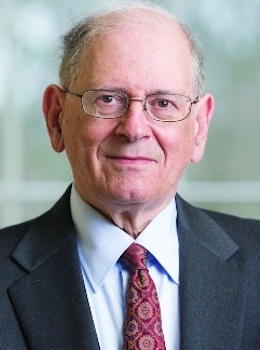The internet have become so popular today, everyone has access but without some persons it wouldn’t have been possible, one such person is Robert Elliot ‘Bob’ Kahn an American electrical engineer who invented the Transmission Control Protocol and the internet protocol along with another well known individual Vint Cerf. Cerf and Kahn first met when Kahn came to UCLA in 1969 to help test the nascent ARPANET.
The two formed an effective working relationship to generate test data and predict and diagnose problems in the network. Born on the 23rd of December 1938, Robert was born to Jewish parents Beatrice Pauline and Lawrence Kahn in Brooklyn New York.
After receiving a B.E.E. degree in electrical engineering from the City College of New York in 1960, Kahn earned M.A. and Ph.D. degrees from Princeton University in 1962 and 1964 respectively.
After finishing graduate school, he worked for AT&T Bell Laboratories, and then became an assistant professor at MIT. He then worked at Bolt, Beranek and Newman (BBN), where he helped develop the IMP.
In 1972 he moved to DARPA and consequently became Director of DARPA’s Information Processing Techniques Office (IPTO). While Director of IPTO he initiated the United States Government’s billion dollar Strategic Computing Program, the largest computer research and development program ever undertaken by the federal government. Dr. Kahn conceived the idea of open-architecture networking.
He is a co-inventor of the TCP/IP protocols and was responsible for originating DARPA’s Internet Program. Dr. Kahn has received honorary degrees from Princeton University, University of Pavia, ETH Zurich, University of Maryland, George Mason University, the University of Central Florida and the University of Pisa, and an honorary fellowship from University College, London.
He is a member of the National Academy of Engineering, a Fellow of the IEEE, AAAI, ACM and a Fellow of the Computer History Museum. He is also a member of the State Department’s Advisory Committee on International Communications and Information Policy, and the National Archives & Records Administration Advisory Committee on the Electronic Records Archives (ACERA).
By 1973 Kahn was already thinking about connecting ARPA’s packet radio and satellite networks to the ARPANET, but he faced formidable challenges, since the three networks were technologically incompatible.
ARPANET used point-to-point transmission, while the radio networks used broadcast; ARPANET tried to guarantee reliable transmission of packets, while PRNET did not; and SATNET had longer transmission delays because of the great distance the packets had to travel.

There was also a hierarchical address system, whereby packets were first sent by the gateways to a network address and then directed internally to a host address within that network.
The Internet architecture was designed to make minimal demands on participating networks, to provide a seamless user experience, and to scale up gracefully, key features that would facilitate the Internet’s rapid expansion in the 1990s.
In 1978 he collaborated with Jon Postel and Danny Cohen, both at the University Of Southern California Information Sciences Institute, to reformulate TCP as a set of two protocols: a host protocol (TCP) and a separate internetwork protocol (IP).
IP would be a stripped-down protocol for passing packets within or between networks; it would run on both hosts and gateways, while the more complex TCP would run only on hosts and provide reliable end-to-end service.
Among other awards and honours, Kahn shared the Charles Stark Draper Prize for 2001 with Cerf, Leonard Kleinrock, and Larry Roberts for their work on the ARPANET and Internet.